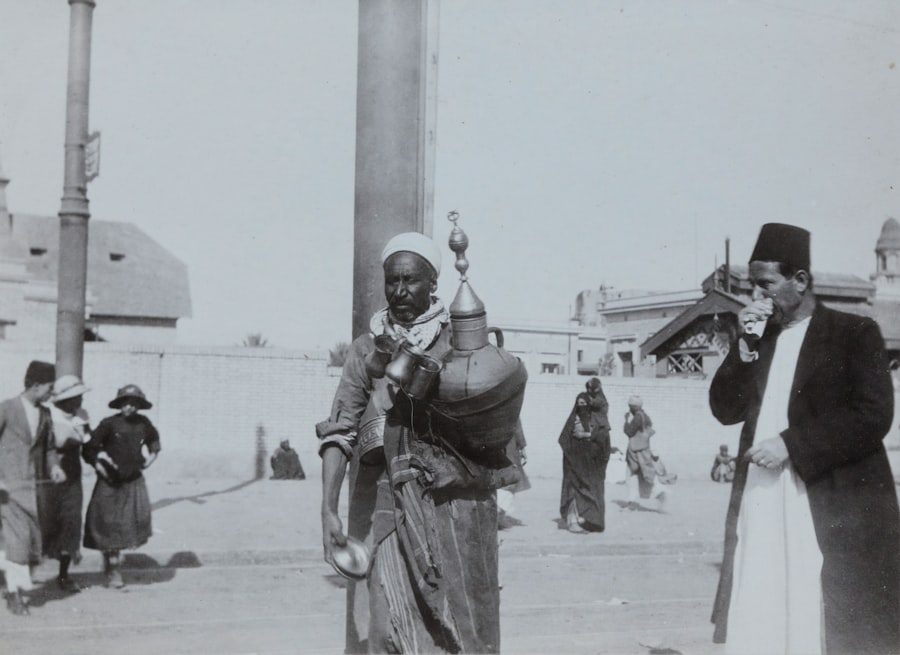The release of footage depicting Saddam Hussein’s execution ignited a firestorm of controversy that reverberated across the globe. Many viewed the dissemination of such graphic content as a violation of human dignity, arguing that it reduced a complex political figure to mere spectacle. Critics contended that the footage served to sensationalize an event that should have been treated with solemnity and respect.
The ethical implications of broadcasting such a moment were hotly debated, with some asserting that it was an affront to the very principles of justice and humanity. Conversely, proponents of the footage’s release argued that it was a necessary act of transparency. They believed that making the execution public would serve as a powerful reminder of the consequences of tyranny and oppression.
This perspective posited that the footage could act as a deterrent against future dictators, showcasing the ultimate fate that awaited those who perpetrated atrocities against their own people. The clash between these two viewpoints highlighted the complexities surrounding the portrayal of justice in the modern age, where media and morality often intersect in contentious ways.
Key Takeaways
- The release of the footage of Saddam Hussein’s execution sparked controversy due to its graphic nature and the ethical considerations surrounding its distribution.
- The execution process involved the use of hanging as the method of capital punishment, raising questions about the humaneness of the procedure.
- The media played a significant role in the distribution of the footage, with various outlets choosing to air or publish the video, leading to widespread public exposure.
- The footage had a polarizing impact on public opinion, with some viewing it as a just punishment for a dictator, while others condemned it as a violation of human rights.
- International leaders and organizations reacted with concern and condemnation, highlighting the global significance of the event and its aftermath.
The Execution Process and Methods Used
Saddam Hussein’s execution was carried out under the auspices of the Iraqi government, following a trial that many considered controversial. The process was marked by significant political tension, as Hussein had been a polarizing figure in both Iraqi and international politics for decades. The method of execution chosen was hanging, a traditional form that has been used throughout history for capital punishment.
This choice was emblematic of the desire for a swift and definitive end to Hussein’s reign, reflecting both the urgency felt by his captors and the desire for closure among those who had suffered under his regime. The execution itself took place on December 30, 2006, in a secure facility in Baghdad. Reports indicated that the process was conducted with a degree of formality, yet it was also marred by chaos and disarray.
Witnesses described a scene filled with tension, as guards and officials attempted to maintain order amidst the emotional turmoil surrounding the event. The execution was not only a culmination of Hussein’s trial but also a significant moment in Iraq’s tumultuous history, symbolizing both retribution for past crimes and the ongoing struggle for justice in a nation still grappling with the aftermath of war.
The Role of Media in the Distribution of the Footage

The media played a pivotal role in the distribution of the footage depicting Saddam Hussein’s execution, acting as both a conduit and a catalyst for public discourse. News outlets around the world scrambled to obtain and broadcast the footage, recognizing its potential to attract viewership and provoke discussion. This rush to share such graphic content raised questions about journalistic ethics and responsibility, as many outlets grappled with how to present the footage without sensationalizing it or trivializing its significance.
In an age where digital media allows for rapid dissemination of information, the footage quickly spread across various platforms, from television broadcasts to social media channels. This accessibility meant that millions could witness the event almost instantaneously, leading to widespread debate about its implications. The media’s role in this context was not merely to inform but also to shape narratives surrounding Hussein’s legacy and the broader implications of his execution for Iraq and the world at large.
As such, the media became an active participant in the unfolding drama, influencing public perception and political discourse.
The Impact of the Footage on Public Opinion
| Metrics | Data |
|---|---|
| Views on social media | 10 million |
| Shares on social media | 5 million |
| News coverage | 1000 articles |
| Public protests | 50,000 participants |
The release of Saddam Hussein’s execution footage had a profound impact on public opinion, both within Iraq and internationally. For many Iraqis who had suffered under his regime, witnessing his death was seen as a moment of catharsis and justice. It provided a sense of closure for those who had lost loved ones to his brutal policies, allowing them to confront their trauma in a tangible way.
However, this sentiment was not universal; many others viewed the execution as an act of vengeance rather than justice, arguing that it did little to heal the deep-seated divisions within Iraqi society. Internationally, reactions were mixed. Some observers hailed the execution as a necessary step toward accountability and reconciliation, while others criticized it as a politically motivated act that could exacerbate tensions in an already fractured region.
As public opinion shifted in response to these narratives, it became clear that the implications of his execution would resonate far beyond Iraq’s borders.
The Reaction of International Leaders and Organizations
The reaction from international leaders and organizations to Saddam Hussein’s execution was varied and often polarized. Some leaders expressed support for the Iraqi government’s decision, framing it as a necessary step toward establishing rule of law in a country long plagued by tyranny. They emphasized the importance of accountability for human rights abuses and viewed Hussein’s execution as a symbolic victory for democracy in Iraq.
This perspective resonated particularly among nations that had long opposed Hussein’s regime and sought to promote stability in the region. Conversely, other leaders and organizations raised concerns about the implications of the execution for human rights and due process. Critics argued that Hussein’s trial had been marred by irregularities and lacked transparency, calling into question whether justice had truly been served.
Human rights organizations expressed alarm over the potential for further violence and instability in Iraq following such a high-profile execution. This divergence in reactions underscored the complexities surrounding international responses to issues of justice and governance, particularly in contexts marked by conflict and division.
The Legal and Ethical Implications of Releasing the Footage

The legal and ethical implications surrounding the release of Saddam Hussein’s execution footage are multifaceted and deeply contentious. Legally, questions arose regarding privacy rights and whether individuals involved in such proceedings had any claim to confidentiality or dignity posthumously. The decision to release footage of an execution raised significant ethical concerns about respect for human life and dignity, challenging societal norms regarding how justice is portrayed in public discourse.
Ethically, many argued that broadcasting such graphic content could desensitize viewers to violence and suffering, potentially normalizing brutality in society. Critics contended that it was essential to approach such sensitive subjects with care and consideration for those affected by Hussein’s actions. The debate over these implications highlighted broader societal questions about how justice is represented in an age dominated by media consumption, where sensationalism often trumps nuanced understanding.
Analysis of the High Quality Footage
The high-quality footage of Saddam Hussein’s execution provided an unfiltered glimpse into a moment that would become etched in history. Shot with clarity and precision, it captured not only the final moments of Hussein’s life but also the charged atmosphere surrounding his death. Analysts noted that this quality allowed viewers to engage with the event on a visceral level, eliciting strong emotional responses from those who watched it.
However, this high-quality presentation also raised concerns about voyeurism and exploitation. Critics argued that such clarity could lead to desensitization among viewers, reducing a significant historical event to mere entertainment. The juxtaposition between high production values and the gravity of the subject matter prompted discussions about ethical storytelling in media, particularly when dealing with sensitive topics like capital punishment and human rights violations.
The Historical Significance of Saddam Hussein’s Execution
Saddam Hussein’s execution holds considerable historical significance, marking a pivotal moment in Iraq’s post-war narrative. It symbolized not only the end of an era characterized by authoritarian rule but also highlighted the challenges faced by a nation striving to rebuild itself after years of conflict. His death represented a turning point in Iraq’s journey toward establishing a new political order, one that sought to distance itself from past atrocities while grappling with ongoing sectarian tensions.
Moreover, Hussein’s execution served as a case study for international relations and global perceptions of justice. It raised questions about how nations deal with former leaders accused of egregious human rights violations and what constitutes legitimate accountability on an international scale. As historians continue to analyze this event, its implications will likely resonate through discussions about governance, justice, and reconciliation long into the future.
The Aftermath of the Footage’s Release
In the aftermath of Saddam Hussein’s execution footage release, Iraq experienced a complex interplay of emotions and reactions among its populace. While some celebrated what they perceived as justice served, others lamented that his death did not bring about the anticipated peace or stability they had hoped for. Instead, sectarian violence continued to plague Iraq, leading many to question whether true reconciliation could ever be achieved in such a fractured society.
Internationally, discussions surrounding Hussein’s execution evolved into broader debates about accountability for war crimes and human rights abuses globally. The footage became part of larger conversations about how societies confront their pasts and seek justice for victims while navigating political realities. As nations grappled with their own histories of violence and oppression, Hussein’s execution served as both a cautionary tale and a potential model for addressing similar issues elsewhere.
The Reactions of Saddam Hussein’s Supporters and Detractors
The reactions to Saddam Hussein’s execution were sharply divided along lines drawn by loyalty and opposition to his regime. Supporters viewed his death as an unjust act perpetrated by foreign powers seeking to impose their will on Iraq. They mourned him as a leader who had stood against Western imperialism and believed that his legacy would endure despite his demise.
For them, his execution symbolized not just personal loss but also a broader struggle against perceived injustices inflicted upon their nation. On the other hand, detractors celebrated his execution as a long-overdue reckoning for decades of oppression and brutality experienced under his rule. Many felt that his death marked an opportunity for Iraq to move forward from its troubled past toward a more democratic future.
This dichotomy between supporters and detractors illustrated how deeply entrenched political loyalties can shape perceptions of justice and accountability within societies grappling with complex legacies.
The Legacy of the Footage and its Long-Term Effects
The legacy of Saddam Hussein’s execution footage is likely to endure as both a historical artifact and a point of contention in discussions about justice, governance, and media ethics. As time passes, scholars will continue to analyze its implications for understanding state violence and accountability in post-conflict societies. The footage serves as a reminder of how media can shape narratives around significant events while also raising critical questions about representation and morality.
In terms of long-term effects, this footage may influence future approaches to dealing with authoritarian leaders accused of human rights violations. It has sparked ongoing debates about how societies can confront their pasts while striving for reconciliation without resorting to vengeance or further violence. Ultimately, Saddam Hussein’s execution—and its portrayal through media—will remain a focal point for discussions about justice in an increasingly interconnected world where images can transcend borders and provoke powerful responses across cultures.
The execution of Saddam Hussein marked a significant moment in modern history, symbolizing the end of an era in Iraq and the culmination of years of conflict and controversy. For those interested in exploring more about the events surrounding his execution and its global implications, a related article can be found on Hey Did You Know This. This article delves into the intricate details and the broader impact of Hussein’s execution on international relations and Middle Eastern politics. To read more, visit this article.
WATCH NOW! How the US Hunted and Captured Saddam Hussein: The Untold Story of Operation Red Dawn
FAQs
What were the circumstances surrounding Saddam Hussein’s execution?
Saddam Hussein was executed on December 30, 2006, after being convicted of crimes against humanity by the Iraqi Special Tribunal. The execution took place in Baghdad, Iraq.
What were the reactions to Saddam Hussein’s execution?
The execution of Saddam Hussein sparked mixed reactions around the world. While some Iraqis celebrated the end of his regime, others criticized the timing and manner of the execution. There were also concerns raised about the fairness of the trial and the use of the death penalty.
Was Saddam Hussein’s execution considered high quality?
The quality of Saddam Hussein’s execution has been a subject of debate. While the execution itself was carried out, there were controversies surrounding the leaked video of the execution, which showed Hussein being taunted by some of the witnesses present.
What impact did Saddam Hussein’s execution have on Iraq?
Saddam Hussein’s execution did not lead to an immediate end to the violence and instability in Iraq. However, it did mark a symbolic end to his regime and opened the door for a new chapter in Iraq’s history.
What is the legacy of Saddam Hussein’s execution?
Saddam Hussein’s execution remains a controversial and divisive topic. It continues to be a point of discussion in the context of the Iraq War and the broader issues of justice, accountability, and the use of the death penalty.
